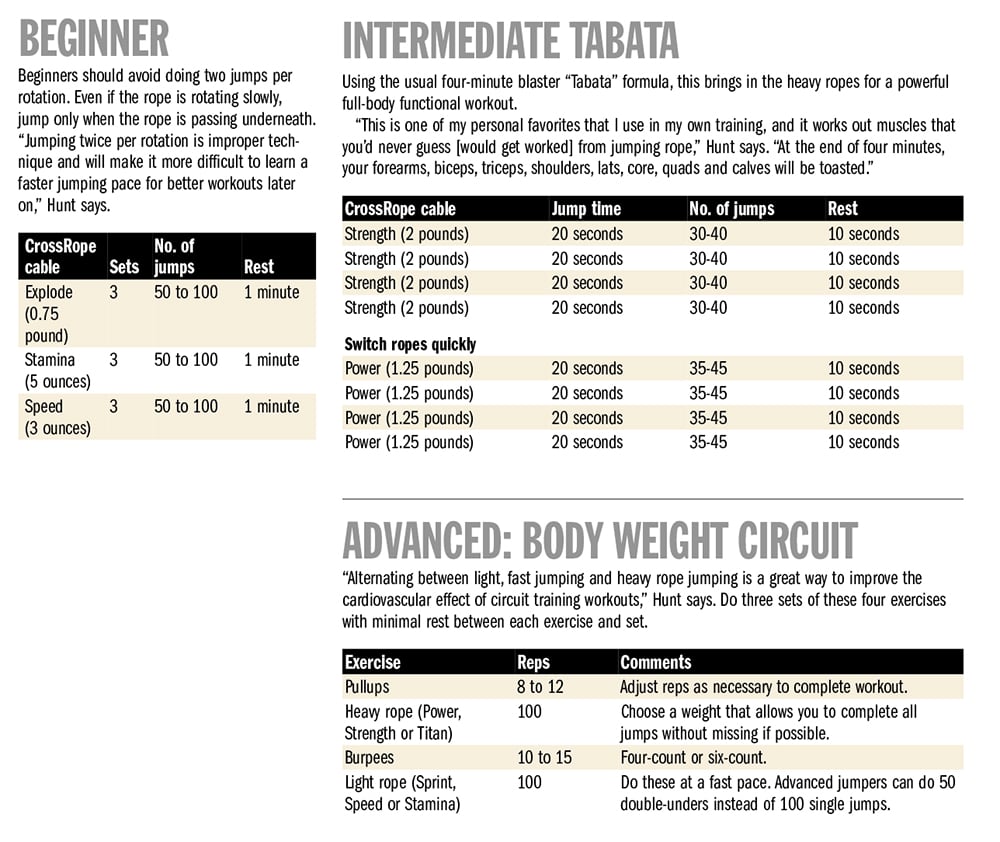Navy Lt. Dave Hunt thought there had to be a better way.
Since his early days as a Naval Academy sprinter and high jumper, Hunt had fallen in love with the simple, cardio-blasting efficiency of jumping speed rope.
"I always saw it as something that I could do anywhere — whether I was home, deployed or training. It's the ultimate portable workout."
But it did only so much.
Later, as a pilot deployed to the Horn of Africa, he discovered heavy ropes — and how much more of a workout jumping rope had to offer. These were not the heavy-handled variety, mind you, but the kind with thicker actual ropes.
"There's a lot of confusion on this because there's really no conventionally accepted terms to differentiate between the types," he says.
But he learned quickly what a difference they made.
"Once you start spinning, the centrifugal force becomes a huge difference with the weighted ropes."
A 2-pound rope that has most of the weight in the handles is going to be much less challenging than a rope with most of the weight in the actual rope.
"The weighted rope is probably about five to 10 times more challenging," he says. "It's remarkable."
And while the lighter-speed ropes provided a great breath-chasing cardio workout, Hunt found that the heavier ropes starting to whip muscle groups into shape he'd never thought a jump rope could touch.
"When you're rotating those heavy ropes, you get more of full-body workout — rather than just a lower-body and cardio workout — because it's really engaging your forearms, shoulders, biceps, lats and even your core," Hunt says.
The only problem: Within three weeks he'd broken the only three heavy ropes at the forward operating base gym.
So, he ordered more. They broke, too.
"I was using them hard, but I wasn't doing anything they weren't supposed to be able to do. They just weren't very durable."
Just as frustrating, Hunt wanted a wide variety of weighted ropes to fit whatever workout he was trying to accomplish on a given day. Just like dumbbells or freeweights, sometimes you want to go light and fast, other times slower and more power-focused.
Skip forward a few years and Hunt has found that better way.
His patent-pending CrossRope design allows you to swap out up to seven weights of cable — from super-thin 2-ounce whips up to 3-pound rubber ropes — between two sets of high-performance handles.
His "Quick Handles" are the lighter version, with a narrower grip geared for tight jumping control using the lighter ropes, yet durable enough to handle the strain of the heavier cables. The "Rugged Handles" provide better grip strength and leverage when training with the heavier CrossRopes.
While you can buy pieces individually, say, if you'd rather just work out with the heavy ropes, the entire system retails for $149.
"What I've found is midweight ropes are ideal for beginners to learn on. They can feel exactly where the rope is. They're getting good feedback, so it helps them learn the timing and coordination," Hunt says.
From there you can progress to building speed with the lighter cables. CrossFitters, especially, like the lighter handles and cables for double-unders, when jumpers whip two rope revolutions into a single jump.
"That's been the core — really, pretty much the sole — jump rope exercise in the CrossFit community," Hunt says.
We asked Hunt for three of his favorite CrossRope workouts. Don't know if you like jumping enough to sink money into a system? Try the workouts on these pages with whatever ropes are available at your installation's gym.

(Click to view larger)
Jon R. Anderson is a staff writer for OFFduty. Contact him at jona@militarytimes.com.





